Hyundai Santa Fe Luggage Test: How much fits behind the third row?

The new Hyundai Santa Fe represents one of the most revolutionary redesigns in recent years, with a handsome if forgettable design replaced by what is best described as the love child of a Ford Flex, an Ioniq 5 and some sort of Land Rover. For a humble family hauler, its design is bold and even controversial. Yay, good for Hyundai. Safe design is boring.
I want to talk about one key element of that redesign, though. As you can clearly tell, the new Santa Fe is a lot boxier than its predecessor and indeed most of its competitors. As we’ve learned time and time again here on This Old Luggage Test, boxy is better when it comes to stowing luggage in the back of a vehicle. Officially, the Santa Fe is listed as having 14.6 cubic-feet behind it’s third row, which is well off the pace of many three-row crossovers, but then the Santa Fe is also considerably smaller than many three-row crossovers. If you want something bigger, Hyundai will sell you a Palisade.
I can confirm that there is more space in the Palisade’s third row, even if the Santa Fe is surprisingly OK for adults (as long as the second row scoots their seat up, which shouldn’t be an issue as there should still be plenty of room up there). But what about cargo space? What’s the practical difference between the 14.6-cubic-foot Santa Fe and the 18-cubic-foot Palisade? Also, how does it compare to other three-row vehicles, including the mechanically related Kia Sorento? (Follow those links for their luggage tests)
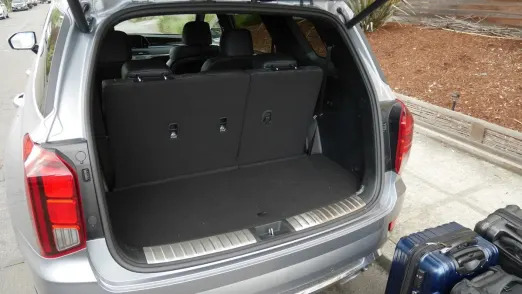
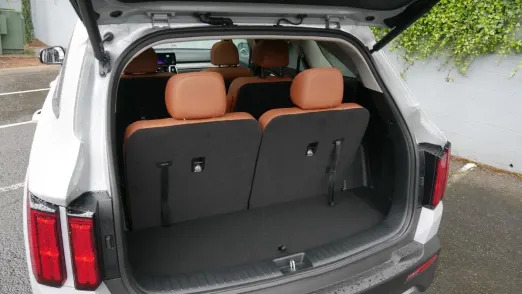
I think these three pics are very telling. Santa Fe top, Palisade lower left, Sorento lower right.
Note that the Palisade has a longer cargo area floor. Note that the Sorento’s cargo floor length is similar to the Santa Fe’s. BUT! Notice how much boxier the Santa Fe is compared to both. Specifically, it doesn’t taper inward as the Sorento’s does.
For the record, the Sorento and Santa Fe have virtually the same third-row legroom figure, so the general floor-space dimensions are similar. It’s up high where the Santa Fe almost certainly enjoys its 2-cubic-foot advantage over its Kia platform mate (12.6 cubic-feet)
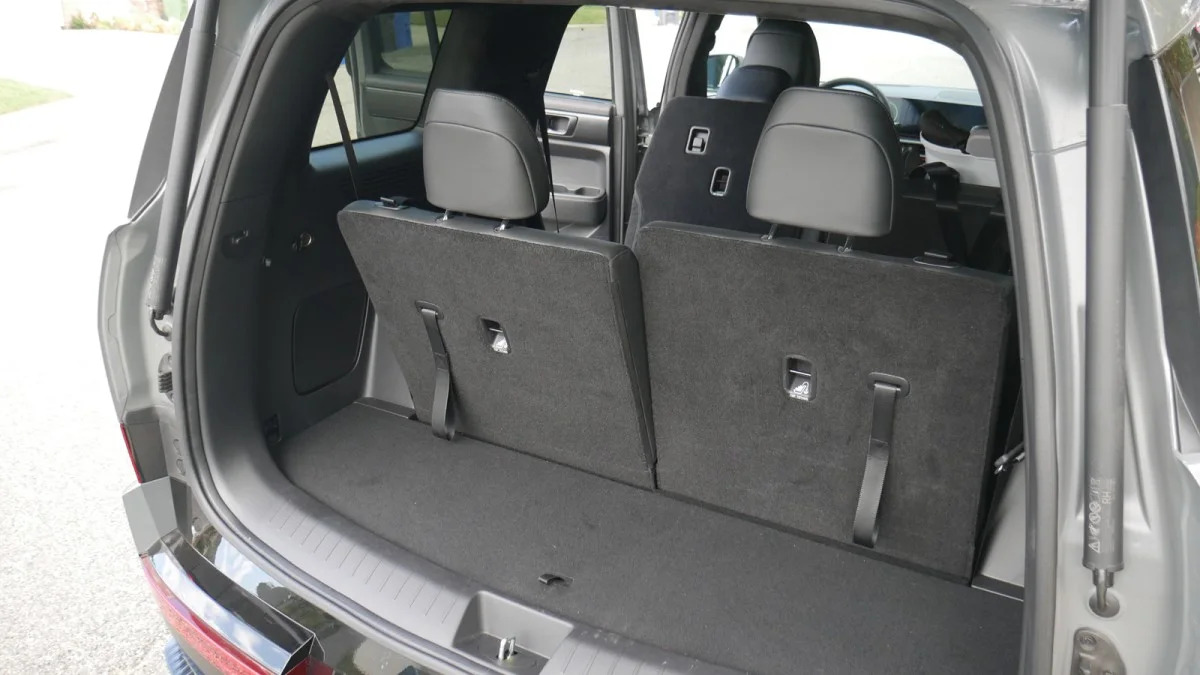
Like the Palisade, the Santa Fe has a reclining third row, and not only that, it reclines quite generously. Normally, I set the recline to an angle I deem comfortable before testing. I am doing that here, but I am also going with a slightly more upright angle I would deem “tolerable” as I have on a few other occasions. You can see the difference above. I tested with both angles.
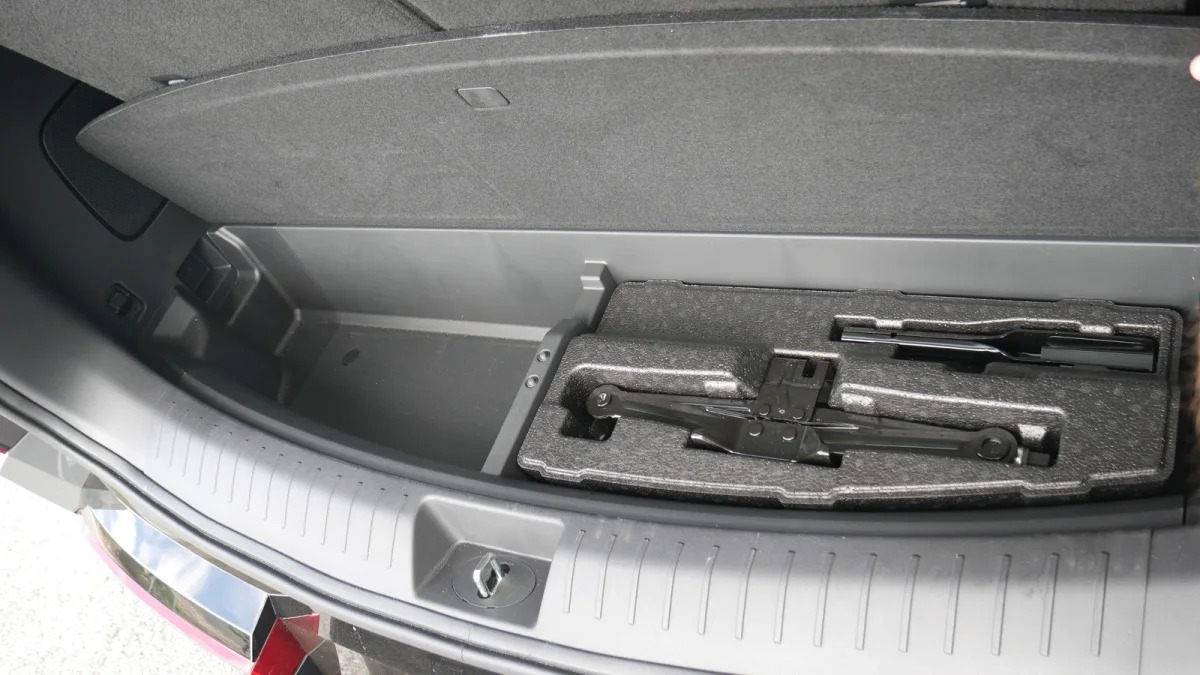
This is the underfloor space, so this wasn’t any help for storing luggage. It’s also almost identical to what you’d find under the Sorento’s cargo floor.
The Palisade’s underfloor space does not have the jack etc. in it, but I deemed it to be more for storage than extra luggage space. The Palisade was actually my first luggage test post, though, and I’ve often wondered if I could’ve made the underfloor space work. The floor isn’t removable, though, so I suspect it could hamper loading. Again, probably something to retest. Either way, that’s the disclaimer.
Let’s get to Santa Fe Test 1 with the third row at “comfort angle.” As with every Luggage Test, I use two midsize roller suitcases that would need to be checked in at the airport (26 inches long, 16 wide, 11 deep), two black roll-aboard suitcases that just barely fit in the overhead (24L x 15W x 10D), and one smaller green roll-aboard that fits easily (23L x 15W x 10D). I also include my wife’s fancy overnight bag just to spruce things up a bit (21L x 12W x 12D).
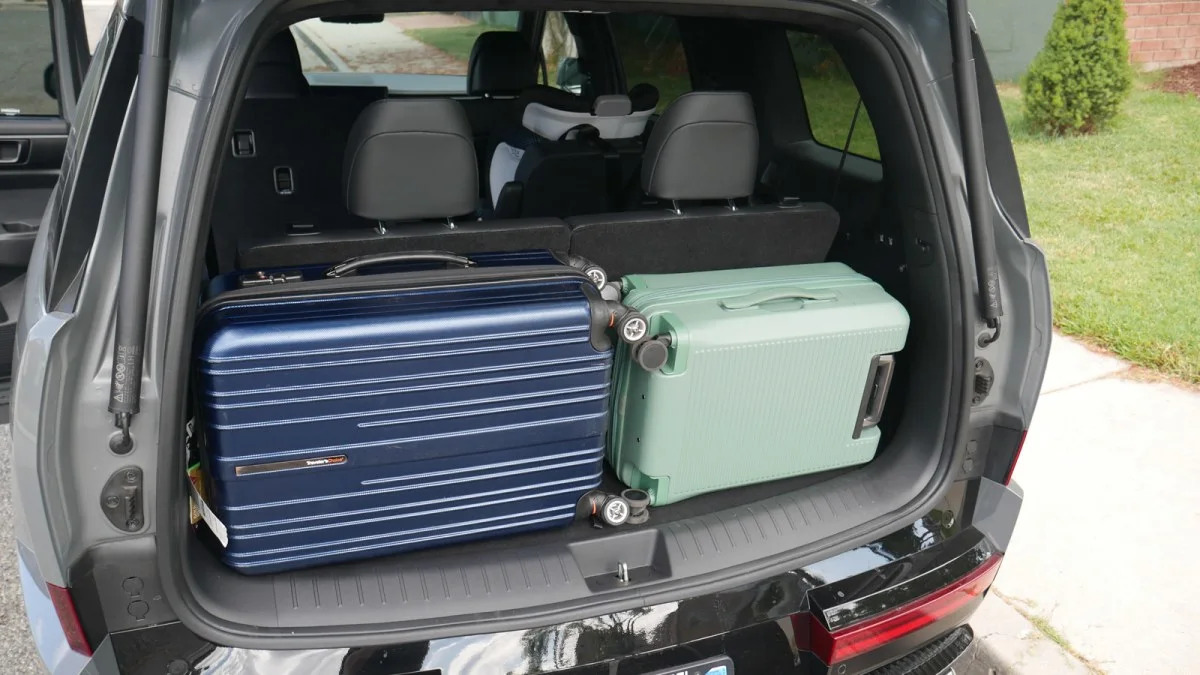
This is the biggest and smallest roller bags. The Sorento managed one of the medium roller bags and the small roller bags. I tried to put fancy bag on top of the green one, but the liftgate smashed it.
So, with third-row passengers being A-OK comfortable, this is what you can manage. Better than the Sorento, but way less than the Palisade (four biggest bags) and indeed almost all the other three-row crossover SUVs I’ve tested. Again, though, the Santa Fe is smaller than those on purpose.
Now lets put the third row at the “tolerable recline” angle.
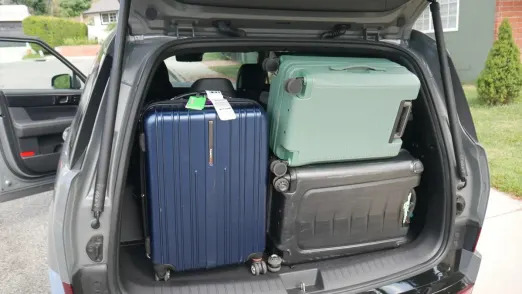
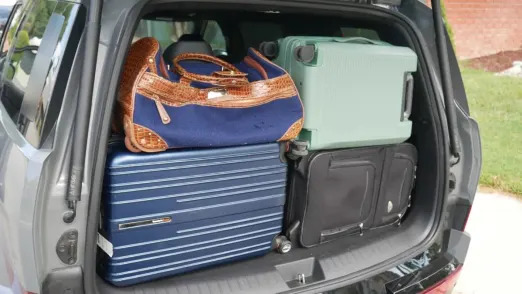
Two options here. The one on the left is the two biggest bags and the smallest roller. It’s awfully perilous, though, as the green bag WILL fall out when I open the tailgate. Look out below! It also blocks the rearview, but you can still see out the left side and this Santa Fe has a rearview camera mirror, so we’re OK on visibility. The headrests and seatback keep the green bag from flying forward, too.
Still, the one on the right equals more volume and a better use of the space. This is one of the big bags, a medium roller, the small roller and fancy bag. This is better than the Toyota Highlander and Mazda CX-90 could manage, both using what I would consider a “comfortable” seating angle though that’s obviously so-not a scientific figure.
By contrast, the Palisade could hold the four biggest bags, so it unquestionably and unsurprisingly enjoys a cargo advantage. Still, the Santa Fe did much better than I was expecting given its short cargo area length. Boxy is once again better, or at least, beneficial.
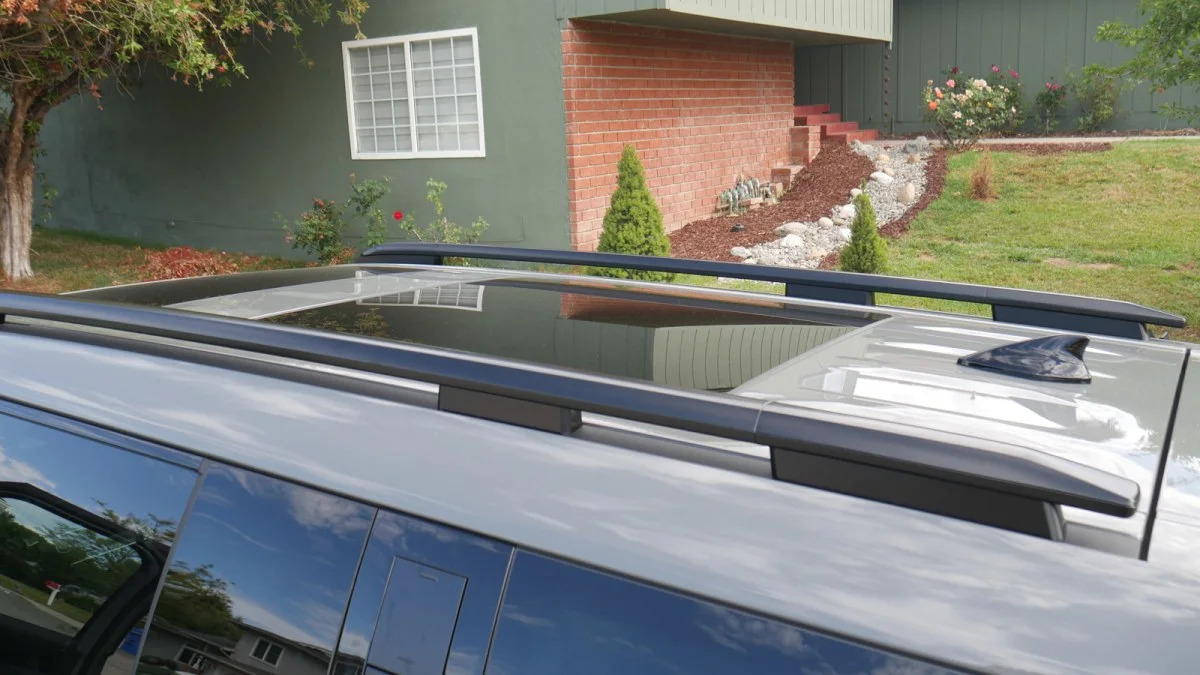
Now, for everything that can’t fit, the Santa Fe XRT includes these great raised roof rails. No need to buy proprietary cross bars and screw into mounting points in what are basically fake rails. You can use your own equipment that’s easy to take off and on, including between vehicles. This makes it easier to mount a cargo box on top.
But, that’s not all …
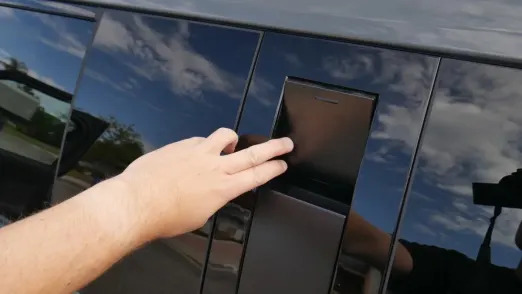
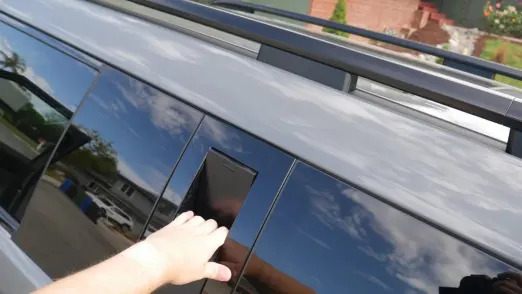
The Santa Fe has these unique box doors on each side. Push them in to reveal a grab handle below. Grab onto it, put a foot on the tire and hoist yourself up for loading whatever onto the roof. This sure seems like a great feature (though I am curious as to how much gunk might accumulate in here over the years). The Santa Fe can also be equipped with a trailer hitch for hitch-based cargo solutions, be it a bike rack or Yakima’s nifty Exo system.
Personally, I’d rather have these features on hand to expand my vehicle’s cargo capacity for those times when I really need it and enjoy the benefits of a smaller vehicle the rest of the time than going with a big, Palisade-sized vehicle all the time. The difference really isn’t that much. I really dig the Santa Fe’s size, packaging, and yep, boxiness.




